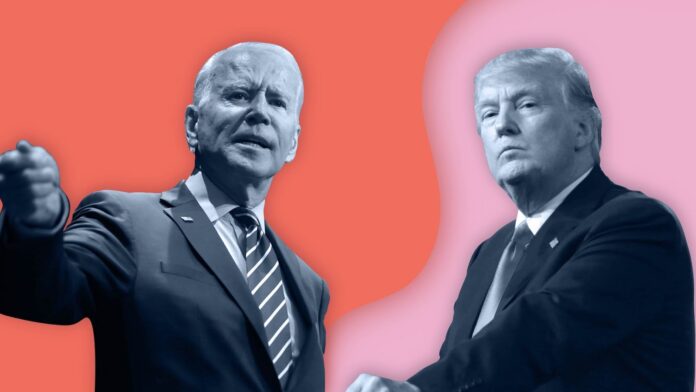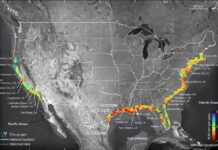By Mariel Gousios
Trump
When it comes to the environment and Donald Trump, there are many mixed signals. He’s gone on record saying that climate change is a hoax and that could “very well go back.” However, he still claims that he’s an environmentalist and gives it the utmost importance. Throughout the four years he was president, there’s no doubt that his opinions on the environment caused a significant change in its legislation.
In June 2017, he made the bold decision to pull out of the Paris agreement. This made the U.S. one of only three countries to not sign. Without the Paris agreement, states decided for themselves whether or not they were going to uphold the pledge. Twenty-five governors joined the United States Climate Alliance, designed to implement policies aligning with the Paris Agreement. States from west to east joined to keep reducing carbon pollution and implement clean energy.
Additionally, Trump seemed to have a fixation on coal, so much so that he pulled back the Clean Power Plan. This action in October 2017 prevented carbon emissions cut of 32% by 2030 from happening. Instead of innovating and implementing renewable energy sources, Trump increased the reliance on coal, which cannot sustain the U.S. forever.
Trump also loosened air pollution regulations during his presidency by changing the protocol for when a company over-pollutes. When companies pollute over the legal limit, they are forced to reduce their emissions to their industry peers’ lowest level. Before, the company over polluting would have to keep this new lower emissions level; now, however, they are allowed to return to the higher level of air pollution.
Some smaller actions that Trump took affected sea levels, bird species, and funding on the environment. Sea level rising was considered less of an issue since August 2017. The need for federally funded projects to assess their impact on rising sea levels was revoked while Trump was president. Trump made it so that installing large wind turbines, leaving oil exposed for extended periods of time, and constructing power lines would no longer violate the Migratory Bird Treaty Act even if doing so killed birds. Four months later, in December 2017, Trump’s administration delisted climate change as a national security threat. With this action, less research and funding would go into climate change, including potential increases in severe weather such as droughts, fires, hurricanes, etc.
Additionally, environmental prosecution reached a new low. The EPA charged the lowest amount of people during his presidency than within the last 30 years. Usually, this would be viewed as a positive because it would mean people were obeying environmental laws. However, this is not the case. The numbers of people prosecuted were abnormally low because violations were being negotiated, potentially increasing pollution since more people were allowed to “bend the rules.” With loosened restrictions and negotiations Trump sent the signal that it was acceptable to deviate from the law even if it meant harming the environment.
In total, Trump rolled back 125 climate policies, covering topics about endangered species, air pollution, water pollution, clean energy, and more. His actions repeatedly proved his stance that protecting the environment was not on his top list of priorities. While supporters may praise him for these actions, numerous environmental groups have taken the dramatic stance and labeled him as one of the worst presidents for the environment.
Biden
In Biden’s inaugural address, he expressed the focus to “repair our alliances and engage with the world once again,” which he’s shown with his first week in office. With the environment being labeled as one of his top immediate focuses, he’s already done actions to protect the environment and stop harmful projects.
Biden rejoined the Paris Agreement, however, it will not be until February 19, 2021 that it is formally entered. The U.S. has to keep the agreement to keep global warming below 2 degrees celsius. To do this, experts recommend reducing 2005 emissions by 50%. Biden has plans to implement renewable energy as well as other tactics to do just that. Although rejoining the Paris Agreement is a great step forward with environmental protection, Biden’s environmental advisor, Gina McCarthly, stated that it won’t be enough.
Biden took another action on his first day to revoke the administration permit for the Keystone XL oil pipeline. This pipeline would have transported approximately 1 million barrels of crude oil a day from Alberta, Canada, to Texas. The Pipeline would have destroyed habitats and harmed species living in them from intense ground disturbance. Additionally, possible oil spills leaking thousands of gallons of oil could’ve hurt ecosystems and the wildlife in them. Mccarthy said “The Keystone pipeline and its construction was not consistent with addressing the climate crisis to the depth and scope that we are planning to address it,” to explain to what extent Biden’s administration is considering the environment.
Additionally, there are plans to make the electrical grid carbon neutral by 2035 and develop a social cost of carbon to be used in cost-benefit analyses. Giving pollution a social cost will allow for the environment to be taken into account, to reduce the amount spent fixing global warming in the future. If the costs outweigh the benefits because of environmental harm, the project or action will be checked. It’s clear that, with many of Biden’s actions his first couple of days, he’s trying to reverse Trump’s environmental effects on America.
Because Biden has only been president for a little over a week, there’s not much to go off of in terms of future environmental decisions. So far, however, he’s labeled it as one of the top four priorities, leading us to believe he has more in store. Even though he’s mostly reversed actions that previous President Trump did, it’s likely to expect more innovative and ecologically conscious legislation in the future.










